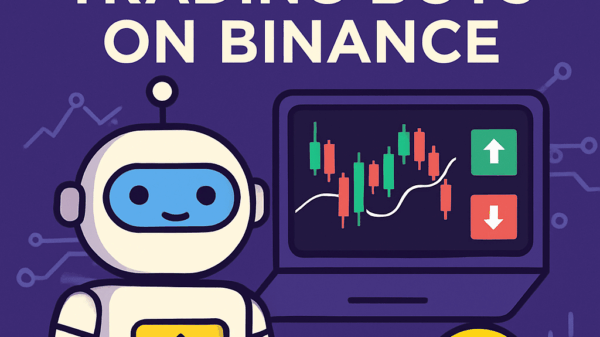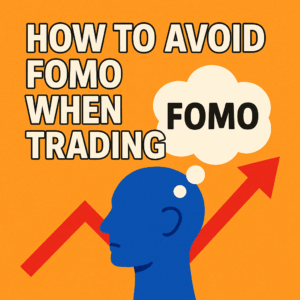How to Trade Bitcoin Volatility
By Jason Miller – Crypto Writer 10.expert 🧠 Covering Bitcoin, altcoins, blockchain & Web3.
As a crypto writer and analyst, I often get asked: “How do you handle Bitcoin’s volatility?” My answer is always the same: you don’t avoid it; you learn to trade it. Bitcoin’s legendary price swings, while daunting to some, are precisely what create incredible opportunities for profit. Unlike traditional markets that close, Bitcoin operates 24/7, offering continuous chances to capitalize on its dynamic nature.
However, trading volatility isn’t about reckless gambling. It requires a disciplined approach, a solid understanding of technical analysis, and robust risk management. It’s about riding the waves, not getting crushed by them.
Let’s dive into how you can effectively trade Bitcoin’s volatility.
How to Trade Bitcoin Volatility: Mastering the Swings for Profit 🎢🚀
Bitcoin’s inherent volatility, while intimidating to some, is a playground for active traders. By understanding market dynamics and employing strategic techniques, you can turn sharp price movements into profitable opportunities.
Embrace Volatility: It’s Your Friend, Not Your Foe 💪
First and foremost, shift your mindset. Volatility isn’t a problem to be avoided; it’s the very source of trading opportunities. Without price movement, there are no gains to be made. Learn to see sharp swings as chances to enter or exit positions strategically.
Understand the Causes of Bitcoin’s Volatility 🧠
Bitcoin’s price swings are driven by:
* Market Sentiment: News, social media trends, FUD (Fear, Uncertainty, Doubt), and FOMO (Fear of Missing Out) can cause rapid shifts.
* Macroeconomic Factors: Inflation, interest rates, and global economic stability.
* Regulatory News: Announcements from governments and financial bodies.
* Liquidity: While high, Bitcoin’s market can still experience significant moves on large orders.
* Derivatives Market: Highly leveraged positions can lead to cascading liquidations, amplifying price moves.
Identify Trending vs. Ranging Volatility 📈↔️

Volatility comes in different flavors:
* Trending Volatility: Price is making consistent higher highs/higher lows (uptrend) or lower lows/lower highs (downtrend), but with large swings along the way.
* Ranging Volatility: Price is moving back and forth within a defined horizontal channel, bouncing between support and resistance.
Your strategy will depend on the type of volatility.
Utilize Technical Indicators for Volatility Analysis 📊
Key indicators to help you gauge and trade volatility:
* Bollinger Bands: Show how far price deviates from its average. Expanding bands indicate increasing volatility, contracting bands (“Bollinger Squeeze”) often precede a significant price move.
* Average True Range (ATR): Measures market volatility over a period. Higher ATR means higher volatility. Use it to set dynamic stop-losses.
* Volatility Indicators (e.g., VIX for traditional markets, or similar crypto-specific indices): While not universally available for every crypto, understanding broader crypto market volatility indices can inform your Bitcoin trades.
* RSI & MACD: Help identify overbought/oversold conditions and momentum shifts within volatile swings.
Day Trading & Scalping: Short-Term Swings ⏰
For active traders who can dedicate significant screen time:
* Scalping: Aim to profit from very small, rapid price changes, often on 1-minute or 5-minute charts. Requires quick execution, high liquidity, and tight risk management.
* Day Trading: Capitalize on price movements within a single trading day, entering and exiting positions before the day closes. Focus on identifying intraday trends, breakouts, and reversals.
Swing Trading: Riding Medium-Term Waves 🌊
Swing trading is ideal for capturing larger price swings that unfold over several days or weeks.
* Identify support and resistance zones.
* Buy near support expecting a bounce, sell near resistance expecting a rejection.
* Use momentum indicators (RSI, MACD) to confirm entry/exit points.
* Requires patience and less constant monitoring than day trading.
Breakout Trading: Capitalizing on Range Expansion 🚀
When Bitcoin consolidates in a tight range (Bollinger Squeeze!), a significant breakout often follows.
* Strategy: Identify the range. Place orders to enter a long position if price breaks above resistance, or a short position if it breaks below support.
* Confirmation: Look for increased volume accompanying the breakout.
* False Breakouts: Be wary of “fakeouts.” A retest of the broken level that holds can confirm the move.
Leveraged Trading (Futures & Perpetual Swaps): Amplifying Gains (and Losses) 💰
Leverage allows you to control a larger position with less capital, amplifying profits from volatility.
* Perpetual Futures: The most common way to trade Bitcoin with leverage. No expiration date, but funding rates apply.
* Extreme Caution: Leverage magnifies losses as well. High leverage in volatile markets can lead to rapid liquidations. Start with very low leverage (2x-5x) if you’re new to it.
* Margin Management: Continuously monitor your margin levels to avoid liquidation.
Options Trading: Profiting from Volatility Itself 🎲
More advanced, but options allow you to speculate directly on volatility:
* Buying Calls/Puts: Profit from large directional moves.
* Straddles/Strangles: Buy both a call and a put with the same (or similar) strike price and expiration date to profit from any large move, regardless of direction, as long as the move is bigger than the premium paid.
* Selling Options: Profit from decreasing volatility or time decay. Higher risk.
* Implied Volatility (IV): A key concept in options. High IV means options are expensive (expecting big moves); low IV means they’re cheap.
Grid Trading: Automating Ranging Volatility 🥅
As discussed previously, grid bots are excellent for range-bound volatility.
* Set a price range and a number of buy/sell grids.
* The bot automatically buys low and sells high within the range, repeatedly capturing small profits.
* Ideal for sideways, choppy markets.
Risk Management: Your Non-Negotiable Shield 🛡️
This is paramount when trading volatility:
* Stop-Loss Orders: Always set a stop-loss. This limits your downside if a trade goes against you. For highly volatile assets, use wider stop-losses or dynamic stops (e.g., based on ATR) to avoid being “wicked out.”
* Position Sizing: Risk only a small percentage of your trading capital (e.g., 1-2%) on any single trade. This protects your overall capital from being decimated by a few bad trades.
* Take-Profit Orders: Define your profit targets and stick to them. Don’t get greedy.
* Don’t Over-Leverage: Especially for beginners.
The Importance of Liquidity 💧
Trade Bitcoin on highly liquid exchanges. High liquidity ensures your orders are filled quickly and at your desired price, minimizing slippage, which can be significant in volatile conditions.
Stay Informed (But Avoid Over-Reaction) 📰
Monitor major Bitcoin news, regulatory developments, and broader macroeconomic trends. These can be catalysts for volatility. However, avoid impulsive trades based solely on news; always cross-reference with your technical analysis.
Psychological Resilience: Managing Emotions 🧘♂️
Volatile markets are emotional battlegrounds.
* Avoid FOMO: Don’t chase pumps.
* Avoid Revenge Trading: Don’t try to recoup losses immediately after a bad trade.
* Patience: Wait for your setups. Not every movement is a trade opportunity.
* Discipline: Stick to your trading plan and risk management rules.
Start Small and Scale Up Gradually 🌱
If you’re new to trading Bitcoin volatility, begin with small positions. Use paper trading or a demo account to test strategies. As you gain experience and confidence, gradually increase your position sizes.
Trading Bitcoin’s volatility isn’t for the faint of heart, but for those who master it, the rewards can be significant. It’s a skill that combines technical analysis, disciplined risk management, and strong emotional control. By understanding the different approaches and constantly refining your strategy, you can turn Bitcoin’s wild swings into a consistent source of profit.








